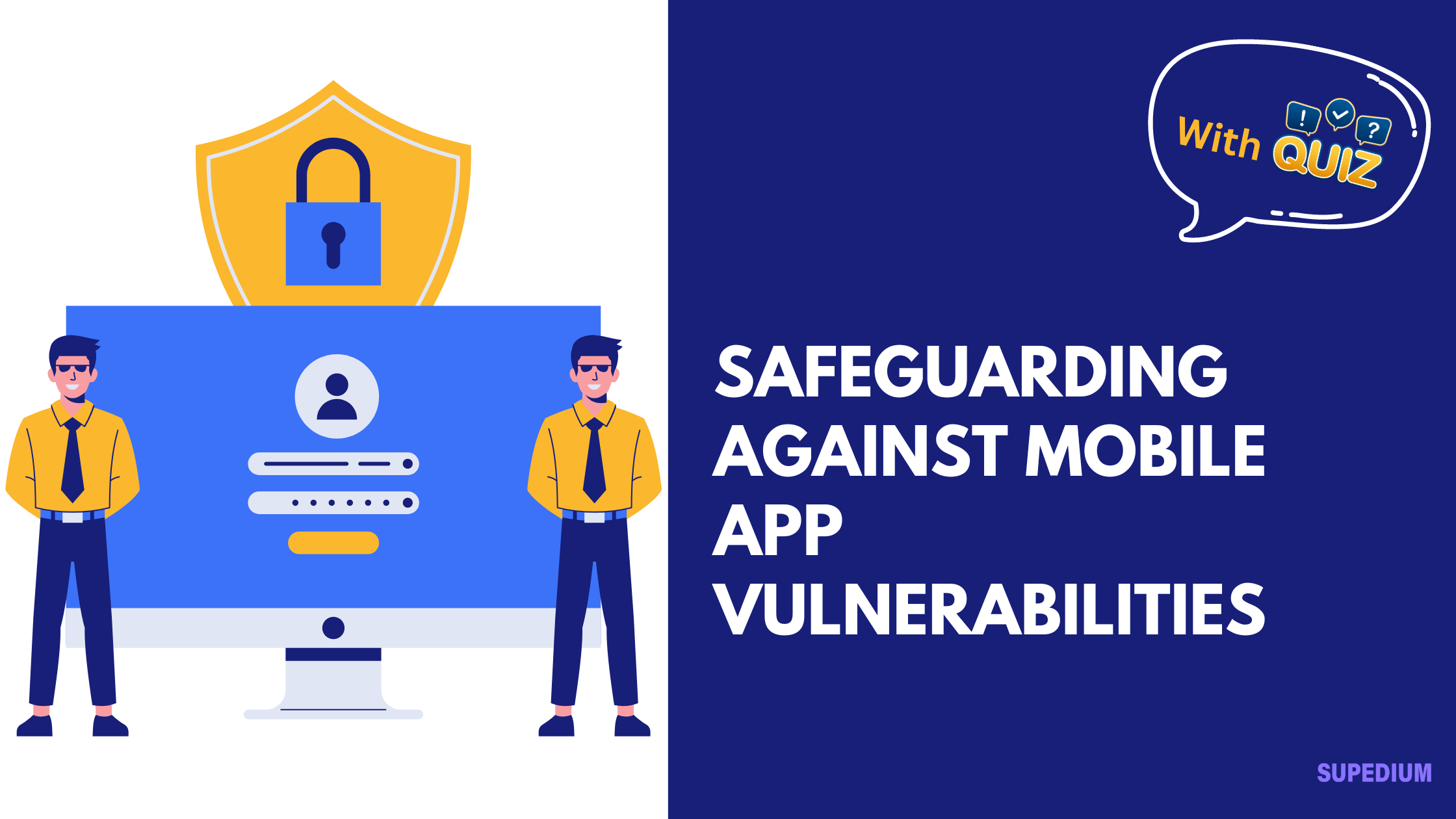Table of Contents
![]()
Introduction
In an era dominated by mobile technology, the security of mobile applications has become a pressing concern for developers and users alike. Mobile app vulnerabilities can lead to severe consequences, including data breaches, loss of user trust, and significant financial impacts. This article aims to explore common vulnerabilities found in mobile applications and provide best practices for safeguarding against them.
Common Mobile App Vulnerabilities
Insecure Data Storage
One of the most prevalent issues in mobile app security is insecure data storage. Developers often store sensitive information, such as passwords or personal data, without adequate protection. This can lead to unauthorized access if the device is compromised. Storing sensitive data in plain text or using weak encryption practices can expose users to significant risks.
Weak Authentication and Authorization
Weak authentication mechanisms, such as poorly designed password policies or inadequate multi-factor authentication, leave applications vulnerable to unauthorized access. Additionally, failures in role-based access control can result in users gaining access to functions or data they should not be able to access.
Insufficient Transport Layer Protection
The failure to implement proper transport layer protection can lead to data being intercepted during transmission. Using unencrypted connections, such as HTTP instead of HTTPS, makes sensitive data susceptible to eavesdropping and man-in-the-middle attacks.
Code Injection Attacks
Code injection attacks, including SQL injection and JavaScript injection, exploit vulnerabilities in the app’s code. These attacks can allow malicious actors to execute arbitrary code, manipulate databases, or extract sensitive information. Real-world examples illustrate the severe consequences of such vulnerabilities.
Insecure Communication
Insecure communication channels pose a significant risk. If data is transmitted without proper encryption, it can be intercepted and manipulated by attackers. Employing secure communication practices is essential to protect user data.
Lack of Reverse Engineering Protection
Mobile applications can be reverse-engineered, allowing attackers to deconstruct the code and find vulnerabilities. Without proper protections in place, such as code obfuscation and anti-tampering mechanisms, an app’s security can be severely compromised.
Best Practices for Mobile App Security
Secure Coding Practices
Implementing secure coding practices is vital for mitigating vulnerabilities. This includes rigorous input validation to prevent injection attacks and proper error handling to avoid exposing sensitive information through error messages.
Data Encryption
Encrypting sensitive data both at rest and in transit is crucial. Strong encryption protocols should be used, and developers should follow best practices for key management to prevent unauthorized access to encryption keys.
Regular Security Testing
Conducting regular security testing is essential to identify vulnerabilities before they can be exploited. This includes penetration testing, code reviews, and the use of automated tools that can scan for common vulnerabilities.
Update and Patch Management
Keeping libraries and dependencies updated is critical for maintaining security. Developers should implement a robust update strategy that includes timely application of patches to fix known vulnerabilities.
User Education and Awareness
Educating users about security best practices can significantly enhance overall app security. Providing guidance on safe usage, password management, and recognizing phishing attempts builds trust and empowers users to protect their data.
Regulatory Compliance and Standards
Overview of Relevant Regulations
Various regulations, such as the General Data Protection Regulation (GDPR), Health Insurance Portability and Accountability Act (HIPAA), and California Consumer Privacy Act (CCPA), impose strict guidelines on data protection. Compliance with these regulations not only safeguards user data but also enhances the reputation of organizations.
Importance of Compliance
Adhering to regulatory requirements is essential for safeguarding data. Non-compliance can result in hefty fines and legal repercussions, making it vital for organizations to stay informed about relevant laws.
Industry Standards
Standards like the OWASP Mobile Security Project provide comprehensive guidelines for mobile app security. Following these standards can help developers mitigate risks and enhance the security posture of their applications.
Incident Response and Recovery
Establishing an Incident Response Plan
An effective incident response plan is essential for addressing security breaches swiftly and efficiently. This plan should outline procedures for identifying, containing, and mitigating breaches.
Steps to Take After a Breach
- Identifying the Breach: Quickly ascertain the scope and nature of the breach.
- Containing the Damage: Take immediate steps to prevent further data loss.
- Notification Procedures: Inform affected users and relevant authorities as required by law.
Lessons Learned and Improvement Strategies
After addressing a breach, organizations should conduct a thorough analysis to understand what went wrong and how to prevent similar incidents in the future. Continuous improvement strategies are vital for adapting to evolving threats.
Future Trends in Mobile App Security
Emerging Threats
As technology evolves, so do the threats. Emerging technologies like artificial intelligence and machine learning are increasingly being used by attackers to exploit vulnerabilities. Staying ahead of these threats is crucial for maintaining app security.
Advances in Security Technologies
Innovations such as biometric authentication and blockchain technology offer promising avenues for enhancing mobile app security. These technologies can provide additional layers of protection against unauthorized access and data manipulation.
The Evolving Role of Developers in Security
Developers play a critical role in the security of mobile applications. As security becomes a fundamental aspect of the development lifecycle, ongoing education and training in secure coding practices are essential.
Conclusion
Safeguarding against mobile app vulnerabilities is a multifaceted challenge that requires diligence, awareness, and proactive measures. By understanding common vulnerabilities, implementing best practices, and adhering to regulatory standards, developers and organizations can significantly enhance the security of their mobile applications. In an ever-evolving threat landscape, a commitment to security is not just advisable; it is essential for maintaining user trust and safeguarding sensitive information.






Be the first to comment